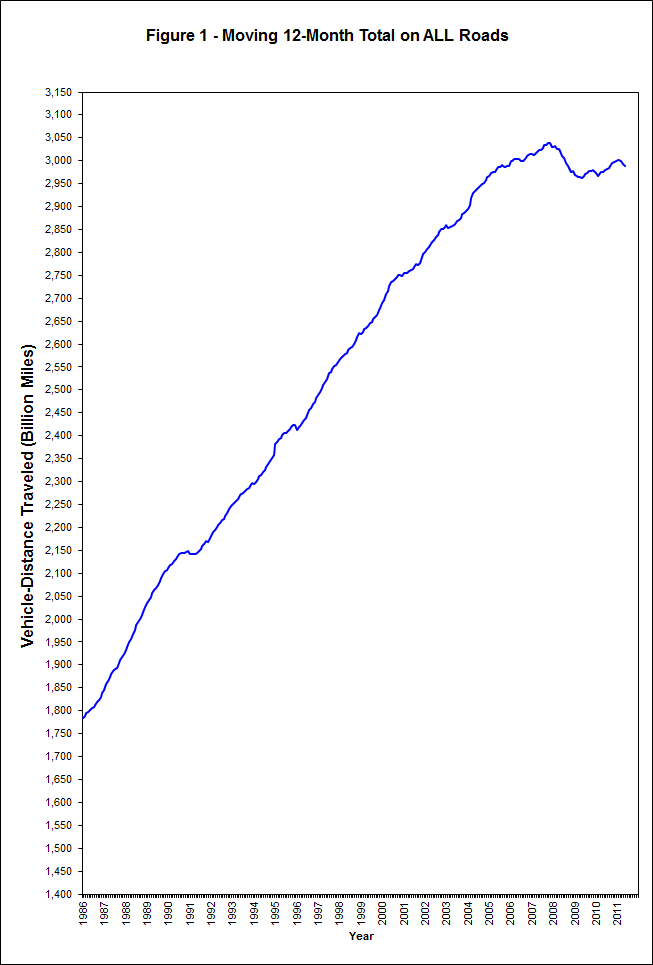Every few months I check in on this graph by the Federal Highway Administration of vehicle miles driven since the mid-1980s (it's a 12 month moving average). And every time I remember to click over there, I'm struck by the how unique the recent trend is in historical context.
Yes, this was a worse recession than other downturns in the time series, and gas prices spiked up to about $4/gallon last spring. But they've since come down and are around $3.60 now, on average, although the graph probably isn't picking up much of the impact of that decline -- it's a moving average and the last observation is May.
Still, other evidence I've seen has led me to question a pretty standard view in economics that demand for gasoline is highly inelastic in the short run. That is, folks don't necessarily cut down all that much on their driving in times of high prices or recessions. You can sort of see this in other recessionary periods in the graph -- little pauses in the steadily upward trend in 1991 and around 2000. But they're little blips.
What you see in the current period is a quite different -- a massive decline in driving over the downturn with little uptick since. Again, both high unemployment and high prices are in play here, so there may be a bounce back out there once the economy gets back on track. But it bears watching -- there may be a new behavioral response in play, with people's driving habits a lot more responsive to these economic changes than they used to be.
Ok, but what's the big deal? Well, I've generally been skeptical of arguments about "the new normal," thinking that much of what we're going through is cyclical, not structural, meaning things pretty much revert back to the old normal once we're growing in earnest again. But it's worth tracking signals like this that remind one that at some point, if it goes on long enough, cyclical morphs into structural.

Source: Federal Highway Admin, see link above
This post originally appeared at Jared Bernstein's On The Economy blog.
